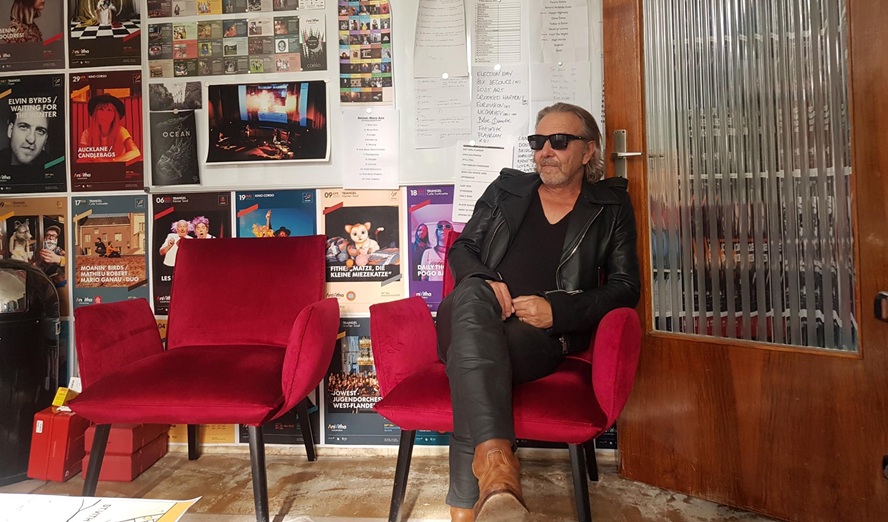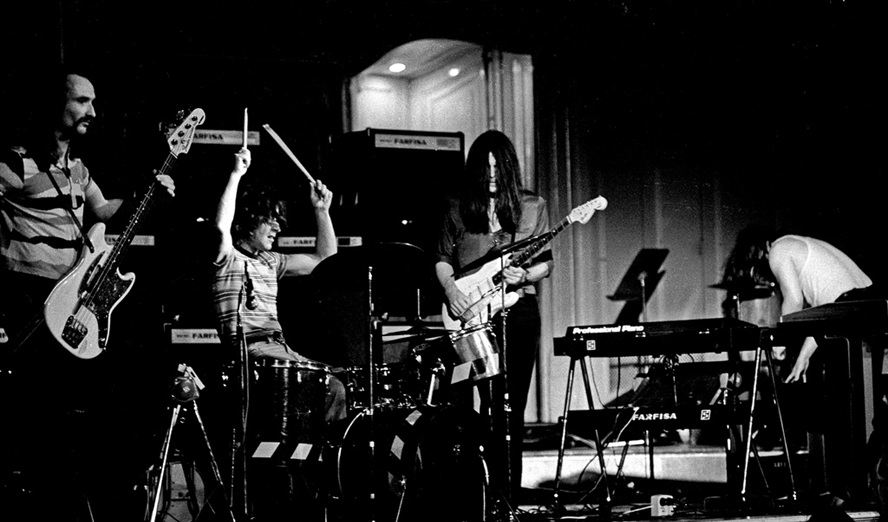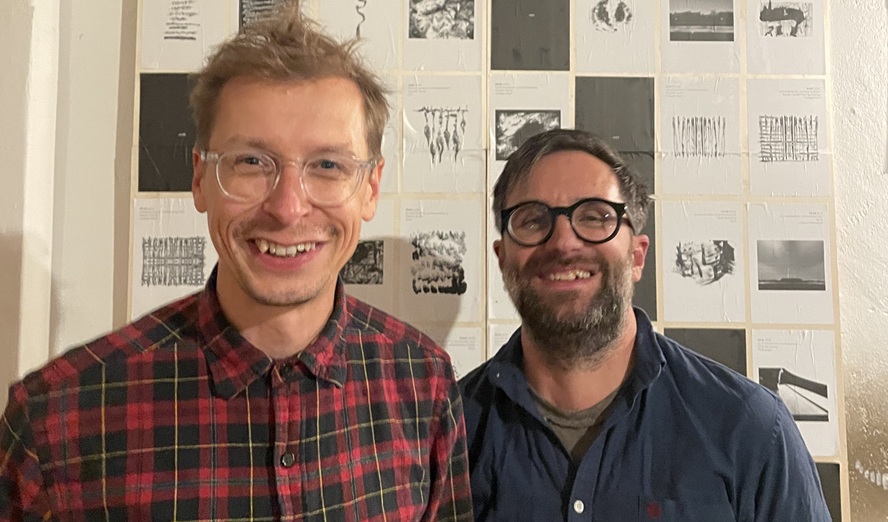Forceful Precedents
Throughout the last century, music was unable to shake off its shadowy other, noise. Emerging at the avant-garde margins, noise, atonality and dissonance have infiltrated and been conscripted into both popular and academic music. Yet sonic and conceptual limits to this remain. Many attempt to deploy and invoke noise or atonality selectively, hoping to contain or deny its radical ambivalent and destabilising potentials.
Italian Futurist sonic experiments are often cited as a fashionable, even respectable artistic precedent for much contemporary practice and the ambivalent and problematic political stance of the Futurists is generally ignored or de-emphasised. Some Futurist tonal innovations were not only inseparable from but actively driven by a weltanschauung that actively glorified and longed for mechanised war in pursuit if Italian imperialist objectives.
Another less cited precedent for practices ranging from electro-acoustic to industrial and post-industrial music is the sonic experimentation of the Soviet avant-garde. While undoubtedly radical and innovative, these practices also formed part of a hegemonic agenda that aimed at nothing less than rule by machine and the mechanisation of man. As Stites points in his work on the Soviet avant-garde, the production agenda had direct cultural analogues:
»In all these Constructivist and Taylorist art movements, one discerns, as in Futurism and related genres, the desire for speed, efficiency, angularity, and »industrialness« not only for their own sake – as fashionable European fads – but as psychic weapons leveled (sic) against the bodily, the mental, and the social »lyricism« and pastoral grace that the new generation associated with utter weakness, pallid gentility, and sloth.«[i]
What we will now trace is how the Italian sono-militarist approach and particularly the Soviet productionist aesthetic began to resurface from the late 1970s onwards in nihilist, hedonist and socially critical forms that are simultaneously nostalgic for and aware of the cost of dreams of total mechanisation. All these newer genres have precedents in the militarist-machinist aesthetics of the original avant-gardes, and what distinguishes them from other forms that deploy noise techniques in more bloodless, »sonically correct« ways is that they have all been open to and embraced the ambivalent cultural-political baggage of their predecessors. Force, mechanisation, regimentation and noise are central to these forms and it is this which makes them both »sonically incorrect« and politically incisive. Unlike totalitarian brutalism or supposedly utopian brutalist architecture, their sensory brutalism is sometimes a stylistic end in itself that nonetheless reveals much about the sonic and political zeitgeist. However, in other cases it has been deployed as a shock weapon against specific stylistic and political regimes. My objective here is to trace the development of a »senso-brutalist« aesthetic. This term is intended to recall the terminologies of the avant-garde era. It implies sounds that can be simultaneously sensual and brutal, hedonist and brutalist. This should become apparent from a brief survey of the precedents for and connections between three senso-brutalist genres that have emerged over the last three decades.
In the late 70s and early 80s the first wave of so-called industrial music violated numerous cultural, political and musical taboos and created a form that even in our officially tolerant and pluralist times remains largely »beyond the pale.« From the mid 1990s onwards, a group of Birmingham techno producers partly inspired by industrial music produced techno that re-activated and developed industrial motifs. At the same time so-called Gabba techno emerged. This took the brutality of industrial and the momentum of techno up to and beyond their logical limits.
These forms illustrate the how the same disputes about the limits of »acceptable« music that continue to shape contemporary music are equally vividly present in alternative non-academic music. If, as Douglas Kahn argues, there has been a constant attempt to selectively bring noise under the jurisdiction of conventional music structures, these forms represent conscious and symbolic attempts at a type of (re)-illegitimation that resists, questions or ignores supervisory attempts at legitimation. They also represent resistance to what Kahn calls the »musicalization« of noise and renewed attempts at insurgent de-musicalization, akin to that of the historical avant-gardes.
1 »Labour Isn’t Working«
Emerging in the politically and economically tense context of the New Cold War, industrial music was a highly ambivalent commentary on the alienating social, political and environmental consequences of mass industrialisation. Whilst documenting this bleak context, the first wave of industrial music also retained a hedonist and emancipatory (under)current. Despite the use of extreme political samples and oppressive electronic noise, many of the groups also flirted with a primitive (post)-industrial mode of dance music. Industrial initiated a tendency that explored the potential for the voluntary assumption of (sonic) discipline as pleasure – (the noise of) industrial labour transmuted from oppressive duty to ambivalent sensual pleasure. Besides invoking the sounds of industry, industrial also re-animated the transgressive aesthetics of para-militarism and regimentation, re-coding these into audiogenic qualities. Industrial has always been structurally unsound, it departed from the very problematic and shadowy aspects of the avant-garde that »respectable« music attempted to flee from or silence. The industrial musicians of the late 1970s retained no illusions about the dystopian as well as utopian aspects of musical mechanisation and their attempts to reclaim noise from music managed to antagonise even Punk audiences confronted with the painful »real« of true sonic provocation. Industrial symbolised the continued heroic lure of industry and the desire to experience the aestheticised »dignity of labour« re-animated in a context of growing unemployment and violent political disillusion.
Another precedent for this stance was Luigi Nono’s La Fabrica Illuminata (1964) both for its use of factory sounds and its political critique of industry. Stockhausen and other post-war composers also created a context in which actual and synthetic industrial sounds (if not their political implications) re-infiltrated serious music. By the seventies the German group Kraftwerk were popularising the »kling und klang« of industrial and technological processes on a scale the Futurists could only have dreamt of.
However, even Kraftwerk’s partly ironic techno-utopianism came to seem unrealistic in the harsh context of the mid to late seventies. Industrial music was an insurgent culture fully aware of the ambivalent legacy and reality of industry as a backdrop to social alienation and violence. Industrial dwelt on the dark side, focusing on the bleakness of industry and on accidents – deformations, toxic leaks, and spillages – creating a metaphorical framework that could be projected back onto mass culture in general.
The sounds of the British groups Cabaret Voltaire and Throbbing Gristle, which were partly a response to the social-industrial crisis of late 70s Britain soon created echoes across Europe, not least in Yugoslavia. In Yugoslavia there were similar tensions between decaying heavy industry and the increasingly technocratic post-industrial image the country wished to promote. Emerging from the Slovene industrial city of Trbovlje, the group Laibach drew on British industrial music but also on sources such as Kraftwerk, electro-acoustic and modern composition and on avant-garde practices such as Bruitism. Laibach grew up around or actually worked in the area’s industries and early pieces such as Rdeci molk (Red Silence) were based on industrial field recordings or representations of industrial processes made using primitive electronics.
Laibach: Rdeci molk
Dating from 1981-2, Rdeci molk typifies both the depiction of industrial decay, but also foreshadows the acceleration of industrial and electronic music that took place in the 1990s. Starting as a bleak tone piece it soon becomes a high velocity example of what we can (now) call an early form of techno or Gabba. At the time it evoked heavy industry running out of control, but now it maps senso-brutalism’s key characteristics: velocity, austerity, and brutality. While techno and gabba producers did not (necessarily) ever hear this track, they were certainly influenced by the altered approaches to electronic music opened up by industrial and at least in retrospect Rdeci molk does set a significant stylistic precedent. It also signifies the way in which this mode of primitive electronic noise was used to force open new conceptual, sonic and cultural territory, creating what Deleuze and Guattari would term new »lines of flight.« Whilst it could be heard as a celebration of industrial brutality, this piece and the body of work it comes from represent a more ambivalent stance that was partly also a lament for the passing of heroic industrial labour, both as a reality and as a political-aesthetic ideal that had been particularly important under socialism.
Jacques Attali repeatedly argues that changes in music are prophetic of political change and the sonic mutations of early industrial did foreshadow not only political developments but acted as self-fulfilling prophecies of genre changes. Whilst some sectors of industrial have remained or become stylistically conservative or even reactionary, other electronic genres later continued its senso-brutalist trajectory by other, technologically superior means.
2 Work and Discipline
The first wave of industrial music, and of senso-brutalism, oscillated between mourning and celebrating de-industrialisation. While some groups focused more on industry’s toxic and alienating aspects, others such as the British group Test Dept., mourned the constructive, collective spirit it was seen to represent, even supporting and recording with the NUM during the Miners‘ Strike. This variant was no less forceful and disciplined, but was more austere and controlled than more militarist-futurist variants of industrial.
The combination of austerity, industrial motifs and linear dynamism, plus the focus on a more constructive spirit, provides a link between the original industrial music and the school of (post)industrialised techno centred on the Birmingham label Downwards. Sonically and conceptually, it is possible to trace a series of (retroactive) clandestine transmissions back and forth, between industrial and its technoid successors. The hidden oscillators facilitating this exchange are the shared characteristics of senso-brutalism. This traffic is two-way, and just as there is industrialised techno, there is also technoid industrial, and both genres have acquired further new sub-genres as a result.
The mode of techno discussed here is an obscure but surprisingly widespread scene; a network of specialist producers and audiences centred on Birmingham and allied techno schools (mainly in Bratislava and Madrid). This mode follows on closely from industrial pieces such as Test Dept.’s Shockwork (1982), and once again, can be linked back to Soviet productionist aesthetics and Stakhanovite ideals. Figures such as Alexei Gastev saw ideal, disciplined workers as representatives of a new »insurgent culture« that would sweep aside reactionary tradition.[ii] For such a worker, there could be »… no romance, no heroic individual deeds – only a relentless battle waged scientifically for production.«[iii] The austere Downwards aesthetic also downplays individuality and romance, and represents a relentless battle waged scientifically or (technologically) for sonic production.
The impression created by a track such as Portion Reform’s Shift Worker is one of strict regularity, repetition and diligence. Titles such as Accidents in the Workplace plus grey, austere graphics and the post industrial sounds create a grim, dour, metallic aesthetic. The sounds suggest precision machinery or glistening blades, an impression reinforced by titles such as Cold Steel. Portion Reform’s Under Duress directly evokes a production line of lathes working at full tilt – a dynamic invocation of industry that would have appealed to advocates of productionism.
Portion Reform Under Duress
However, although its ambivalence is less dramatic, and it does not dwell on alienation, this school’s stance is also not (only) what it seems. Its brutalism is both for and against industry, celebrating machinist aesthetics while subtly alluding to its negative aspects. It suggests a voluntary assumption of mechanisation, and production line regimentation as a form of sensory and conceptual
escape. The original machinist aesthetics were deployed against peasant and aristocratic cultures and demanded mass acceleration. A dominant technoculture has now arrived and already begun to decay, and some of these artists seem not just to herald its arrival, but to document and slow it down, deglamourising it and signalling a return to austerity as an ethical creative and cultural-political stance and a subtle critique of spectacular culture. This is apparent in the de-emphasis on individuality, and the conscious adoption of the old machinist and industrial themes of (self) discipline and brutalism.
3 Final Velocity
Simon Reynolds writes: »Experience has taught me that when all right-thinking people agree something is beyond the pale, utterly devoid of merit, that’s precisely when you should start paying attention – for it’s usually an indication that something interesting is going on.«[iv]
One key marker of these forms is tempo. Much Industrial had a grinding, oppressive, monotonous character, and is the slowest of the three. Techno averages around 140bpm, already much faster, but Gabba begins around 180bpm and has reached speeds of over 350bpm. Gabba and related sub-genres (stormcore, breakcore etc.) appear as an unforeseeable manifestation of Vsevolod Meyerhold’s biomechanical dream (or nightmare) of what he termed a »new high-velocity man.«[v] Emerging in the ever intensifying mediascape of the nineties, it can be seen as a frantic attempt to accelerate beyond acceleration, to get beyond the speed of the cultural and informational dataflow (and also intensify the escapist trajectories of drug use). In this sense and also in its rejection of melody and the entire humane value system traditionally associated with music, Gabba is a type of post-music, or music after one of the many apocalyptic scenarios its producers like to invoke.
High tempo is generally seen as suspect, or »not serious«, both within electronic and compositional circles. Gabba’s refusal to stay within the unspecified but strict speed limit is just one reason why it is held in such open contempt. Besides speed it has other familiarly suspect characteristics – extremely regimented beats and themes of war, alienation and horror (albeit often in more cartoonish or populist forms than is the case with industrial). Some more experimental producers at the fringes of the scene (those on labels such as Praxis or Notek) are highly politicised and ultra-leftist, but in general the aggression expresses non specific cultural tensions and textures, what Simon Reynolds calls »…a firestorm of belligerence with no specific target.«[vi] While the Futurists‘ sonic invocation of war was deployed in support of an actual militarist agenda, Gabba’s para-militarism is more a reflection of what has been termed the contemporary military-entertainment complex. In this sense it works both as symptom of and commentary on, the present cultural climate of hyper-violent films and computer games far more extreme in content and intent than any music.
Gabba operates on the cusp of regimentation and release, simultaneously galvanising and stupefying, heightening and dulling the senses. Besides militaristic beats and sound effects (explosions, gunfire, helicopters), it also (re)-deploys explicitly machinic and productionist sounds. This is clearly apparent on the track Magnetic Storm by XMF.
XMF Magnetic Storm
The long sonic tradition of industrial sounds is amplified by Gabba’s extreme velocity. Here again, a link can be made to the Soviet advocates of mechanisation who argued for strict industrial discipline to prevent (non work-focussed) thought. Although often overtly hedonistic and nihilistic, with no wider agenda, Gabba as a form of sonic production does echo the focussed senselessness of a totally disciplined worker. In fact, regular exposure to Gabba could have effects similar to those of regulated industrial shockwork, not least on hearing. So again we encounter senso-brutalist paradoxes: disciplined indiscipline, the liberating annihilation of individuality, and mechanisation as music, or at least, as sonorised pleasure organised on an industrial basis.
From Blake onwards, mechanisation and industralisation have been associated with, if not the Satanic, at least the uncanny. Militant rationalism has produced numerous eerie by-products, and the recent decline of physical heavy industry and the industrialisation of culture and information have amplified the »dark side« that these genres tend to gravitate towards or emerge from. This focus on the »Power of Darkness« inverts previous modes of sensual experience in music. What musical »common sense« still largely defines as annihilating and alienating, Gabba flees into.
A pre-industrial parallel for this escape into darkness is Richard Wagner. Gabba producers have sometimes sampled Wagner and aim to escape into a similarly ambivalent and sinister phantasmagoria. Yet rather than a Germanic hero seeking redemption, Gabba presents the living spectacle of temporarily lobotomised »Gabbanauts« seeking apocalyptic-bombastic immersion. In this sense it returns to the archetypal pre-rational spectres that haunt mechanisation and simultaneously constructs a hyper-mechanised high-velocity version of the sublime with a barely concealed Nietzschean quality plus a quasi-Schopenhauerian pessimism that also animated Wagner. Ultimately, Gabba functions as a metaphorical black hole into which mechanised sound is dragged at infinite speed and from which it is impossible to return unaltered, if at all.
So either literally or conceptually, all senso-brutalist modes simultaneously accelerate away from and compulsively return to the spectre of industry. They simultaneously express the alienation caused by the threat of mass mechanisation and an ambivalent nostalgia for its disappearance. Veering between machinic delirium and militantly disciplined sobriety, senso-brutalist producers occupy or flee into the territories that dominant political, cultural and even musical narratives are in flight from or wish to silence. Analysing these »bad sectors« can reveal hidden narrat
ives and diagnostics, a painful but inescapable »unofficial version.«
Selected Sonography
Proletkult – Gastev (Introduction)
Laibach: Rdeci molk
Portion Reform – Under Duress
XMF – Magnetic Storm
Industrial:
Autopsia – In Vivo
SPK – Berufsverböt
Converter – Denogginizer
Black Lung – The More Confusion … The More Profit
Techno:
Olga+Jozef #04 B1
Rumenige – Numb7 A1
Portion Reform – Shift Worker
O.B.I. – Guilty
Ogi – Bomber
Gabba:
Mescalinum United – We Have Arrived
DJ Promo – Day of Anger
Hell-E-Copter – Tilt!
Napalm 5 – Scherben bringen Gluck
Liquidator – Hartcore Will Never Die!
Bold Bob – Dive into Steel
[i] Richard Stites (1989). Revolutionary Dreams – Utopian Vision and Experimental Life in the Russian Revolution. New York/ Oxford: Oxford University Press. 161.
[ii] Ibid, 153.
[iii]. Ibid. 154.
[iv] Simon Reynolds (1998): Energy Flash A Journey through Rave Music and Dance Culture. London: Picador. 256.
[v] Stites, 161.
[vi] Reynolds, 261.
Bio
Alexei Monroe is a freelance cultural researcher writing on themes including electronic music, ideology, cultural history and post-industrial arts. He is a co-founder of the Industrialised Culture Research Network (I.C.R.N., together with Peter Webb and Heinrich Deisl). He is the author of Interrogation Machine: Laibach and NSK (MIT Press 2005) and Pluralni monolit (Plural Monolith) (Maska 2003). These books focus on the work of the Slovene arts collective Neue Slowenische Kunst (NSK). NSK was also the subject of his doctoral thesis and he holds a PhD in Communications and Image Studies from the University of Kent.
Further information:
www.icrn.blogspot.com
http://sonocentric.nskstate.com/
http://pluralmachine.blogspot.com/



















